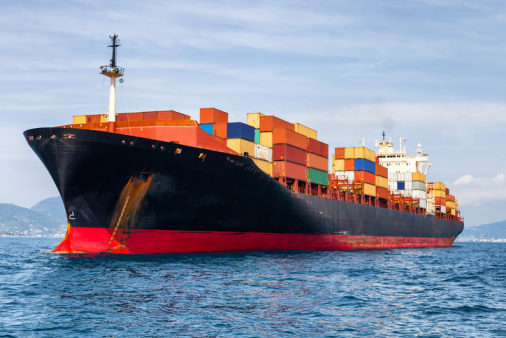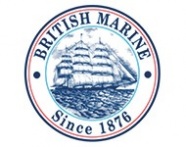Choose your anchoring location carefully

Authored by British Marine
A vessel’s anchors and chain can cause serious damage to both manufactured and natural seabed features. In many cases, damage caused by a vessels anchor can also result in dangerous situations onboard the vessel.
Great care should be taken in identifying suitable locations to anchor, and being prepared for timely action should anchor dragging occur.
Damage is generally caused by the impact of the anchor whilst being lowered, abrasion and impact of the chain whilst at anchor, or the hooking/snagging of the anchor on a seabed feature as it moves whilst being recovered or whilst dragging.
Particularly Vulnerable Seabed Features
Submarine Pipelines
Commonly these are used to carry oil, chemicals, gas, or water.
Any damage to oil or chemical pipelines resulting in loss of containment, would create a risk of pollution, and subsequent harm to the environment.
Gas pipeline ruptures can cause a loss of buoyancy for vessels nearby, as well as creating a flammable atmosphere in the near vicinity, which could cause injury and damage to property.
Damage to water pipes, would likely result in disruption to water supplies for residential areas. In some cases, this may be the only water supply for a remote area.
Displacing pipelines will require expensive survey and potential remedial works.
Causing damage to important pieces of national infrastructure, is likely to result in severe punishment from shore authorities.
Submarine Cables
These will either be power or communications cables.
All power cables, and some communication cables, will carry dangerously high voltages, and this can be hazardous to life.
Some cables contain petroleum-based fluids for insulation and lubrication purposes, that can leak into the natural environment should the cable be damaged. Resulting in pollution.
Fouling a cable can cause a capsize situation on smaller vessels.
As with the note above on pipelines. Many cables provide lifeline services, and a vessel Master, or owner can expect severe penalties should damage be caused.
Natural features
Important natural features such as coral reefs or sea grass are fragile and can easily be damaged by anchoring.
Many regulated areas have rules against anchoring in these areas, with substantial fines and/or imprisonment, bans etc.
For smaller vessels wishing to moor in these areas, the use of pre-positioned mooring buoys is strongly recommended.
Identifying a Suitable Anchoring Point
Anchoring should take place as far as possible from any seabed infrastructure or prohibited areas. Usually, this means anchoring only in designated anchorages.
Any local regulations should be obtained and followed. As an example, the International Hydrographic Organisation recommend 0.25 Nautical Mile as a minimum safety margin from subsea cables.
Due to the variance of charting accuracy, inaccuracy in vessel positioning, and the distorting effects of scale on electronic charts we would caution against relying upon specific distances from dangerous anchoring points. The vessel Master will have to assess each location separately and pick the most suitable location to anchor, considering the predicted weather and direction the vessel may drag anchor.
It should be ensured that vessels are navigating only on approved navigational charts, either electronic or paper. These must be fully corrected up to date, including the manual plotting of Temporary and Preliminary Notices as necessary.
An important part of any voyage or passage plan should be identifying suitable and safe anchorage points. Both for planned anchoring or if need be, as a contingency. Publications such as Admiralty Sailing Directions can provide additional information on good anchoring locations.
We encourage the bridge team to discuss any port approach, where prospective contingency anchorages can be highlighted. When passing over areas of extensive subsea infrastructure, we would recommend that the anchor windlass remains in gear with brake applied, to prevent any inadvertent letting go.
There have been reported incidents of vessels anchors running out during bad weather, whilst the vessel was underway. The likelihood of subsea damage is clear in such a scenario, and this highlights the importance of anchor brake and securing arrangements being maintained in good condition. It is recommended to re-check anchor securing and bolster as necessary, in advance of predicted bad weather.
Anchor Watch
A vigilant anchor watch is crucial to predicting the likelihood of anchor dragging or identifying if it has already started to happen.
Tidal currents should be identified and times of maximum rate or substantial changes in direction should be posted, to allow the watchkeeper to increase scrutiny at these times.
Weather forecasting should also be closely monitored and compared with actual conditions.
The watchkeeper should make full use of anchor watch alarms on any navigation equipment fitted. This can include the satellite navigation receiver, radar, and electronic chart system. The correct plotting of the anchor position and subsequent calculation of anchor swinging radius is necessary to set-up a worthwhile alarm zone.
As these alarms are often based on a single position reference system, it is important to utilise other methods of position fixing, such as visual bearings of identified features. Similarly, establishing visual cues such as positioning radar variable range markers on prominent fixed points will quickly show any relative movement of the vessel.
Regular checking and logging of compass bearings, radar ranges, depth under keel and log speeds all contribute to maintaining a close watch on the vessel position.
Frequent visual checks of the anchor cable lead should be conducted and recorded.
Most Master’s standing orders or night orders will state this, but we would recommend that if a watchkeeper is at all in doubt about dragging anchor, they should call the Master and have the main engine made ready for use.
What if?
If a vessel believes it has impacted or become snagged on a subsea cable or pipeline, rapid reporting to the appropriate shore authorities should be considered a first step.
Every effort should be made to limit damage, often this is best achieved by attempting to maintain position, until expert advice can be received. Owners should contact British Marine as their P&I Insurance provider for additional advice and assistance.
In the case of snagged subsea cables, vessel crews are advised never to attempt cutting the cable.
Vessels should be ready to slip their anchor chain in an emergency. We would recommend that the crew take the opportunity to confirm the arrangements on their ship. All parts should be confirmed as free to move and that any tools required are in place.
About British Marine
British Marine, as a global marine insurer, is the leading provider of Fixed Premium P&I and Hull and Machinery cover.
British Marine was founded in 1876, and since then, we have continuously provided cover to owners of small, medium-sized and specialist vessels, gaining a reputation for sector insight and expertise.
Today British Marine is the largest provider of commercial P&I insurance, offering limits of up to $1bn and Hull & Machinery to values of up to $25m, insuring in excess of 10,000 vessels worldwide. British Marine, as a wholly-owned subsidiary of the QBE Insurance Group, one of the world's leading A+ rated multinational insurance companies, we are able to provide the financial strength and security to deliver first-class underwriting and claims service.
Our team of experienced claims handlers includes former members of International Group clubs, lawyers and master mariners. We have the knowledge and skill to mitigate risk and provide resilient claims support and service to Owners insured with British Marine.

